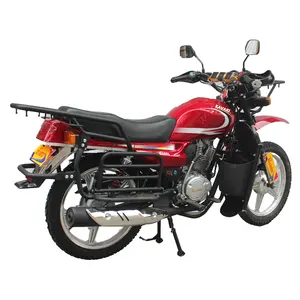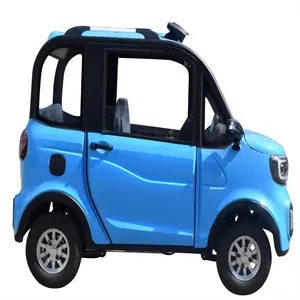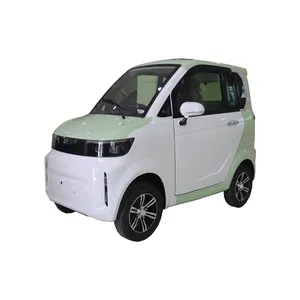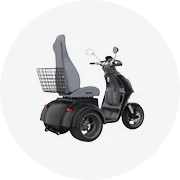Popular na sua indústria






Vender quente MCB AC mini disjuntor 4.5KA AC 400V Disjuntor em miniatura
€ 1,44 - € 1,49
Pedido Mínimo: 100 Peças






Caixa de distribuição plástica ip65 de energia trifásica para equipamentos elétricos industriais, unidade consumidora de fusíveis ABS MCB de engenharia
€ 0,5582 - € 2,33
Pedido Mínimo: 20 Peças



Medição da Unidade Inteligente Disjuntor, Disjuntor Inteligente, Tuya App Wifi Disjuntor Inteligente Tuya Wifi
€ 6,10 - € 7,16
Pedido Mínimo: 5 Peças










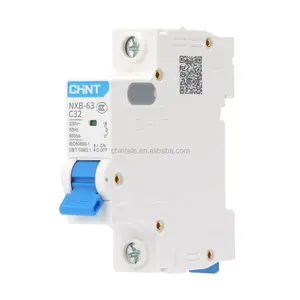



Caixa Moldada MCCB 3P Chint Mcb Ruptura do Circuito Elétrico Em Miniatura Mini Disjuntores Miniatura
€ 0,8094 - € 1,34
Pedido Mínimo: 10 Peças







Largura de 1p 2p 3p 4p 13mm pelo polo MCB compacto com o mcb alto do curto-circuito 6000A que quebra a capacidade datilografa interruptores diminutos
€ 0,6141 - € 0,7071
Pedido Mínimo: 10 Peças




Design moderno da América Do Sul 36mm Miniature circuit breaker
€ 0,6513 - € 2,80
Pedido Mínimo: 100 Peças






Bom Preço De Novo Design Jzdn4-40.5/1250-3150/31.5-40 Tipo Lateral De Montagem Lateral Disjuntor De Vácuo Interno
€ 1.116,38 - € 2.604,88
Pedido Mínimo: 3 Peças












Geya mini disjuntor GYM9-32A-2P tipo a, de alta qualidade, gym9, real, 10ka, c60, c65, mcb
€ 2,04 - € 3,14
Pedido Mínimo: 50 Peças






Disjuntor sem fio, controle remoto wi-fi disjuntor miniatura elétrico
€ 3,52 - € 7,04
Pedido Mínimo: 180 Peças




Novo Design YGL7C Circuito Em Miniatura Disjuntor de Corrente Ajustável 1P P + N 2 1P 3P 3P + N 4P 6KA 8KA 10KA Tipo C D MCB
€ 0,9304 - € 4,66
Pedido Mínimo: 10 Peças
Buscas Relacionadas:
disjuntor feito na chinasubstituindo o disjuntor elétricoempresa fabricação do disjuntor elétricode disjuntorpreço do disjuntorlista de preços de disjuntorchina fabricantes disjuntormelhor preço do disjuntortodos os tipos de disjuntorem linha disjuntorcom disjuntor abbdisjuntor duplofunção do disjuntordisjuntor abnnovo disjuntor






O melhor design pequeno disjuntor dpn de volume, 1p + n 6a 10a 16a 20a 25a 32a dnx3 mcb
€ 0,4466 - € 0,4652
Pedido Mínimo: 10 Peças




Disjuntor de segurança, de alta qualidade, mais barato, novo design 10a 16a 20a 25a 32a NT-50
€ 0,3722 - € 0,7443
Pedido Mínimo: 100 Peças






Cnc novo design YCB9-63 6ka miniatura disjuntor, 1p 2p 3p 4p 63a mcb com capa protetora
€ 0,5768 - € 2,25
Pedido Mínimo: 200 Conjuntos





Professional Design 1P 10KA AC Mini Circuit Breaker MCB Mini Breaker Single Pole
€ 0,7443 - € 2,05
Pedido Mínimo: 120 Peças






Novo design 2 pólo 2 p 100amp 6a 16a 20a 25a 32a 40a 63a 80a 100a 10ka rccb/rcd disjuntor 10 amp rccb
€ 2,61 - € 8,38
Pedido Mínimo: 1 Peça






Disjuntor de circuito cdm3 3 fase mccb 300 amp
Pronto para enviar
€ 37,11 - € 65,02
Pedido Mínimo: 5 Peças
Envio por peça: € 8,77






Interruptor elétrico tipo c, design profissional, mcb, polo único, mini disjuntor
€ 5,59 - € 11,17
Pedido Mínimo: 100 Peças






Xlk disjuntor com mcb mcb & rccb, solução de construção de fábrica
€ 0,1861 - € 0,9304
Pedido Mínimo: 1 Peça




Disjuntor tengen, marca atacado, preço mais recente design 2 pole 40a ac disjuntor miniatura com 6ka capacidade de quebra
€ 1,40 - € 1,87
Pedido Mínimo: 10 Peças






Disjuntor saip/saipwell, mini disjuntor de novo design, tipo-vazamento, 4 amp, disjuntor
€ 0,9304 - € 2,80
Pedido Mínimo: 10 Peças






Hycm1 disjuntor de circuito moldado, 100a 2a, 2 polas, 3 polos, 4 estojos, disjuntor trifásico, 3 p mccb
€ 5,59 - € 16,75
Pedido Mínimo: 5 Peças






Reve UNO Série 'B' 1 Pólo Miniature Circuit Breaker MCB Disjuntor-10 Ampere-Branco
€ 0,4652 - € 0,5396
Pedido Mínimo: 10000 Caixas












Disjuntor de motor gv2me20 tesys skincare com novo design
Pronto para enviar
€ 32,68 - € 32,70
Pedido Mínimo: 10 Peças




Disjuntor rccb/elcb nn1 2 pole, disjuntor vazamento 240v/415v
€ 2,33 - € 3,26
Pedido Mínimo: 100 Peças










África novo design pg215500 5-15a dd230500 10-30a pg260500 30-60a 2p 4p áfrica tipo gardv 500ma disjuntor diferencial
€ 5,40 - € 5,59
Pedido Mínimo: 100 Peças






O projeto o mais atrasado MCCB HWABN 2P 3P 4P moldou o disjuntor mccb 800 ampères do caso
€ 9,31
Pedido Mínimo: 5 Peças

OM1 Elétrica aberto proteção do motor disjuntor Moldado do Caso novo design
€ 9,17 - € 137,41
Pedido Mínimo: 1 Peça










ZN63(VS1)-24 630a Design personalizado sólido selado 10kv 24kv disjuntor tulipa contato disjuntor a vácuo
€ 725,65
Pedido Mínimo: 3 Peças






Design novo disjuntor bipolar c65, disjuntor miniatura bipolar 40a din-rail montagem 63a mini mcb preço tetrapolar habitação disjuntor
€ 1,64 - € 2,47
Pedido Mínimo: 1 Peça






Novo design disjuntor trifásico tuya app, com metling 63a wifi disjuntor inteligente com alta qualidade
€ 42,80 - € 43,73
Pedido Mínimo: 20 Peças






Novo design QJC QJC 4 p 4 polos ELCB RCCB RCD 6KA 6-125A 400V/415V 30mA Disjuntores de Corrente Residual Eletrônicos
€ 5,59 - € 8,04
Pedido Mínimo: 1199 Peças






Disjuntor de produto popular, mais novo design de alta qualidade, 1 polo, mini disjuntor
€ 1,12 - € 1,49
Pedido Mínimo: 120 Peças












Matis novo design durável de alta qualidade, 3 poles rccb 2p 4p 10a 20a 40a ML60-B tipo b rccb disjuntor de ar
Pronto para enviar
€ 46,52 - € 53,96
Pedido Mínimo: 1 Peça
Envio por peça: € 7,12



Interruptor automático trifásico com liberação térmica MHM1-1600 1600A projetado para uso em circuitos elétricos
€ 249,33
Pedido Mínimo: 5 Peças
Principais categorias
Sobre projeto do disjuntor
Alibaba.com oferece 1610 produtos de projeto do disjuntor.Há uma vasta variedade de opções de projeto do disjuntor disponíveis para você, como c, b e d. Você também pode escolher entre casa, industrial e protetora projeto do disjuntor. Assim como li, lsi e lsig projeto do disjuntor. E com a opção de ter o projeto do disjuntor branco,preto ou vermelho.
